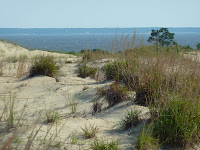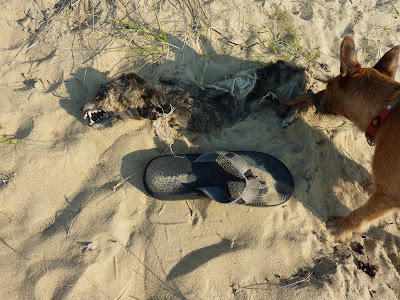
I'm no scientist - but I found this interesting. With the unprecedented heat we've had lately, it is easy to believe in global warming. The earth is heating up and human's are at least partially to blame.
But how much? Some researchers say that some of what is happening could be a normal occurrence, or possibly an swing in a natural heating and cooling cycle.
When studying effects of volcano's on climate change, researchers funded by NASA found that.

"The pattern of winter warming following the volcanic eruption is practically identical to a pattern of winter surface temperature change caused by global warming. It shows that volcanic aerosols force fundamental climate mechanisms that play an important role in the global change process."
But they go on to say that human interaction could make the effects of volcanic eruptions on climate worse.
If you look at history, there was a mini ice age as recently as the 1800s. could the current warming trend just be us coming back to normal from then? What were the causes of the mini ice age then?
Wikipedia says:
Several causes have been proposed: cyclical lows in solar radiation, heightenedvolcanic activity, changes in the flow of ocean currents, an inherent variability in global climate, and a decrease in atmospheric CO2 driven by decreased human populations (e.g. due to the Black Death and the Columbian Exchange).
But even more recently, there is increasing evidence that we may be heading towards more cooling. Apparently, some scientists point to shifts in ocean currents as the culprit in a new trend towards cooler weather.
The bitter winter afflicting much of the Northern Hemisphere is only the start of a
global trend towards cooler weather that is likely to last for 20 or 30 years, say some of the world’s most eminent climate scientists.
Their predictions – based on an analysis of natural cycles in water temperatures in the Pacific and Atlantic oceans – challenge some of the global warming orthodoxy’s most deeply cherished beliefs, such as the claim that the North Pole will be free of ice in
summer by 2013.According to the US National Snow and Ice Data Centre in Colorado, Arctic summer sea ice has increased by 409,000 square miles, or 26 per cent, since 2007 – and even the most committed global warming activists do not dispute this.
William Gray, emeritus Professor of Atmospheric Sciences at Colorado State University, said that while he believed there had been some background rise caused by greenhouse gases, the computer models used by advocates of man-made warming had hugely exaggerated their effect.




































